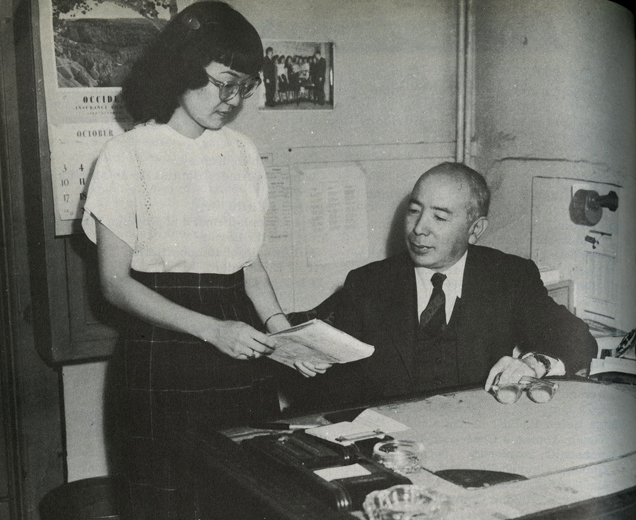The Chicago Connection to the War Relocation Authority
In honor of Asian American and Pacific Islander Heritage Month, we’re sharing the often-overlooked story of how many Japanese Americans settled in the Chicago community.
This story begins in a dark and painful chapter in American history. Following the bombing of Pearl Harbor in 1941, the federal government established a new department called the War Relocation Authority. This federal agency was created to oversee the internment of nearly 120,000 Japanese Americans.
While most of these Americans were incarcerated in West Coast internment camps, a small number were permitted to leave the camps and live outside the West Coast exclusion zones — if they found jobs and pledged loyalty to the United States. Many of those who were “resettled” came to communities across the Midwest, including Chicago.
The WRA opened its first field office in Chicago in January 1943. NPR affiliate WBEZ explained why Chicago was chosen as a regional field office: “Unlike the West Coast, Chicago didn’t have the same pre-war racial prejudice towards the Japanese since there were only 400 of them living in the city at the time.”
When Japanese Americans arrived in Chicago, they had to immediately register with the WRA office. They also had to obtain jobs and housing. If they changed jobs or residences, they had to report it to WRA.
“Chicago’s new Japanese American residents were not in captivity but they were still in custody,” Zócalo Public Square noted.
As the city’s Japanese American population soared to 20,000 by 1945, the WRA encouraged them to disperse throughout Chicago, wary of a concentration of Japanese Americans in a single neighborhood, which might encourage political organizing. But like many ethnic groups before them in this nation of immigrants, Japanese Americans in Chicago banded together, establishing their own support networks.
They built communities and owned grocery stores, restaurants and other businesses across the city. Small Japanese business districts formed near the Hyde Park neighborhood as well as on the Near North Side. (The University of Chicago’s Regenstein Library recently featured Nikkei South Side, an exhibit exploring the pre-and post-war dynamics between Japanese Americans and the Hyde Park neighborhood.)
Yet Chicago’s Japantown was fleeting because “the government pressured them to shed their Japanese identities and assimilate into white society,” as WBEZ explained. By 2000, nearly three-quarters of Japanese-Americans in Illinois were living in Chicago suburbs.
We share this historical perspective — on the 80th anniversary of the internment camps — amid a nationwide rise in hate crimes and racial violence against Asian Americans and Pacific Islanders. Raising awareness of their stories now is more important than ever.
In sharing the history of Chicago’s Japanese Americans, we acknowledge the discrimination they have faced and honor their legacy and contributions to Chicagoland communities.

